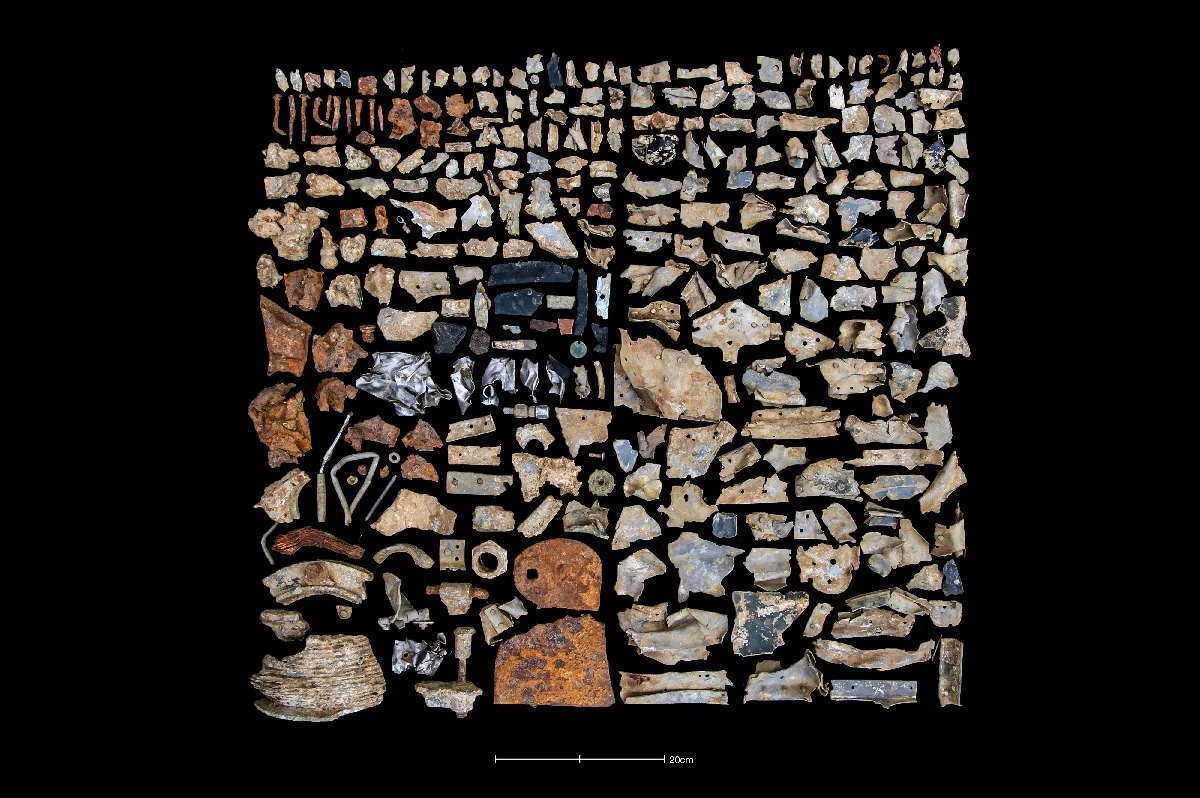A six-week recovery project is underway in North Essex to investigate the crash site of a US Army Air Forces P-47 Thunderbolt that went down during World War II.
The effort, led by Cotswold Archaeology in partnership with the US Defense POW/MIA Accounting Agency (DPAA), seeks to recover evidence from the aircraft and, if possible, the remains of its young pilot, 2nd Lieutenant Lester Leo Lowry, for repatriation to the United States.
Lowry, of the 487th Fighter Squadron, 352nd Fighter Group, was flying P-47D Lucky Boy when it crashed on the 26th January 1944. The aircraft had departed RAF Bodney, Norfolk, on a training mission and entered heavy cloud while manoeuvring in formation.
Records show it struck the ground at a steep angle, leaving the 23-year-old pilot no chance to escape. Despite immediate investigations, no remains were ever recovered, and he was later listed “Missing in Action”.
Over the decades, fragments of the wreckage have been uncovered, most notably by the Essex Aviation Group in 1979. In 2018, DPAA teams surveyed the site and recommended a full professional excavation.
Now, archaeologists are applying advanced techniques, including geophysics, soil screening, and structured metal detection, to carefully recover material from the crash crater of the plane.
To date, more than 2,300 square metres have been surveyed, yielding nearly 5,000 artefacts linked to the Thunderbolt’s cockpit, wings, engines, and weaponry.
The project has drawn together around 250 volunteers from the UK, US, Canada, and beyond – including veterans, serving military, archaeologists, and members of the local community. Engagement with schools and museums ensures Lowry’s story and sacrifice remain part of the region’s heritage.
Born in Pennsylvania in 1920, Lowry was orphaned young and raised by his grandparents. He trained as a pilot in the United States before deploying to Britain in late 1943. His name is etched on the Walls of the Missing at Cambridge American Cemetery.
Rocky Gillette, DPAA Director of Partnerships & Innovation, expressed gratitude for the international support: “Their dedication strengthens our mission to honour America’s missing and keep faith with their families until every effort has been made to bring them home.”
The site is protected under the UK Protection of Military Remains Act and is not open to the public.
Header Image Credit : Harvey Mills
Sources : Cotswold Archaeology







